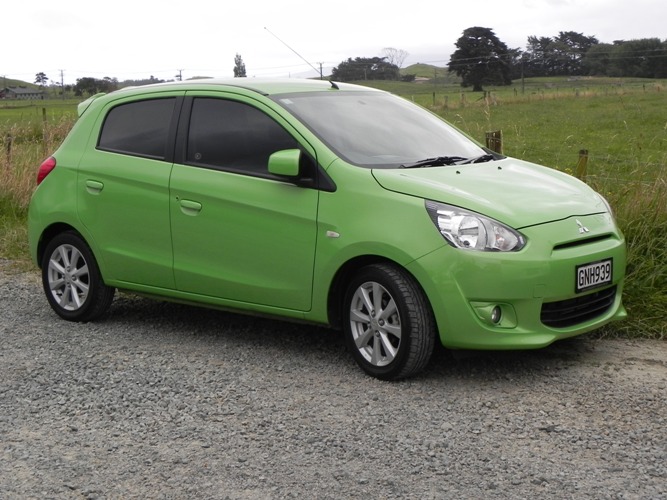
Car reviews
Read our expert car reviews - where we give insight into the latest vehicles to hit our roads.
22 February 2013
These days, Suzuki dominate the small hatch sector and numerous competitors are vying for position, with aggressive pricing and strong product offerings. So while it’s unlikely to be plain sailing for Mitsubishi as it was back in the late 70’s, at least they’re in there with the right product at the right price to give it a good shot.

Mitsubishi’s Mirage was introduced to the new car scene back in 1978, and went on to sell more than five million units globally, with over 51,000 New Zealanders buying one before its departure in 2003 when it was replaced by the Colt. Now, a decade later, the Colt nameplate has been dropped to make way for Mirage once again.
The re-born Mirage has a fair amount of interior space for its class, especially for back seat passengers, and even though tiny boot spaces are a reality in this sector, there is a reasonable 235L which can be increased to 599L by folding the rear 60:40 split seats.
Mitsubishi have replaced the Colt’s four-pot engine with a chain driven three-cylinder 1.2L unit, delivering 58kW of power at 6000rpm and 102Nm of torque at 4000rpm, while emitting 113g/km of CO2 emissions. It sounds as irregular as any three cylinder motor does, and while it’s not huge on performance, with a curb weight of only 890kg, the Mirage gets along well enough.
The first generation Mirage had a four-speed manual ‘box, known as a Super-Shift transmission, with adjustments from power to economy by means of an extra gear lever, which effectively gave it eight forward gear ratios and two for reverse. But long gone are those busy stick shifting transmissions, with the new Mirage offered in CVT form only for New Zealand drivers. There are no paddle shifters to play with but the driver can move the gear lever into B (brake) range, for a sportier alternative to D (drive). In B range the gearbox selects a lower ratio range as well as assisting with slowing the vehicle down by means of engine braking when the throttle pedal is released.
Petrol consumption is claimed to be 4.6L/100km for the LS and 4.9L/100km for the GLS models; the difference is a result of the variance in wheel sizes. Skinny 14-inch steel wheels are fitted to the LS models while the GLS versions are fitted with 15-inch alloy-wheel rims with slightly wider tyres. The Mirage has an Eco light that appears when the throttle pedal is being used conservatively, and during our test drive from Wellington to Otaki, by taking a conservative approach, we managed to achieve the claimed fuel consumption figures quite easily.
The MacPherson Strut front and torsion-beam rear suspension setup provides a smooth ride and manoeuvring around in tight spots is made easy thanks to a tight 9.2 metre turning circle
There are currently only two sub-$20k cars in our marketplace that can boast a five-star ANCAP crash-test rating; they are Kia’s Picanto and Mitsubishi’s Mirage. Passive safety features include driver and passenger frontal airbags, side airbags on front row seats and two curtain airbags.
Active safety features include Electronic Brake-force Distribution (EBD), Emergency Brake Assist (EBA), Hill Start Assist and Electronic Stability Control (ESC).
A few funky colours are on offer with slick names to match; names like Wasp, Wasabi, Neptune, Panther Black and Red Velvet.
Pricing starts at $18,990 for the LS model to $21,990 for the GLS model. The GLS adds front fog lamps, privacy glass and a rear boot spoiler.
The Colt/Colt Plus sales were fifty units a month for Mitsubishi. We’re told they expect to double that number with Mirage and believe the base model car will be the strongest seller, with its main target customers being fleet buyers.
Mitsubishi NZ anticipates that the frugal economy and sharp pricing of the new Mirage will be strong draw cards. Over three decades ago the Mirage accounted for 35% market share in its sector, but things were easier back then, with the market being less sophisticated and less populated.
These days, Suzuki dominate the small hatch sector and numerous competitors are vying for position, with aggressive pricing and strong product offerings. So while it’s unlikely to be plain sailing for Mitsubishi as it was back in the late 70’s, at least they’re in there with the right product at the right price to give it a good shot.